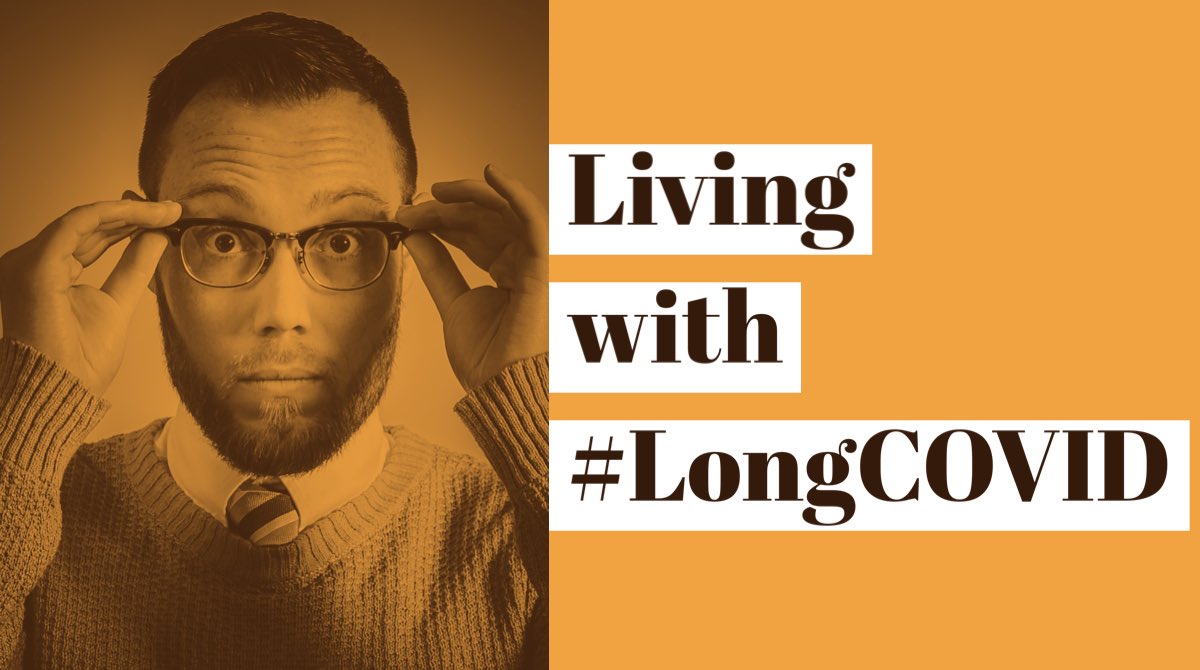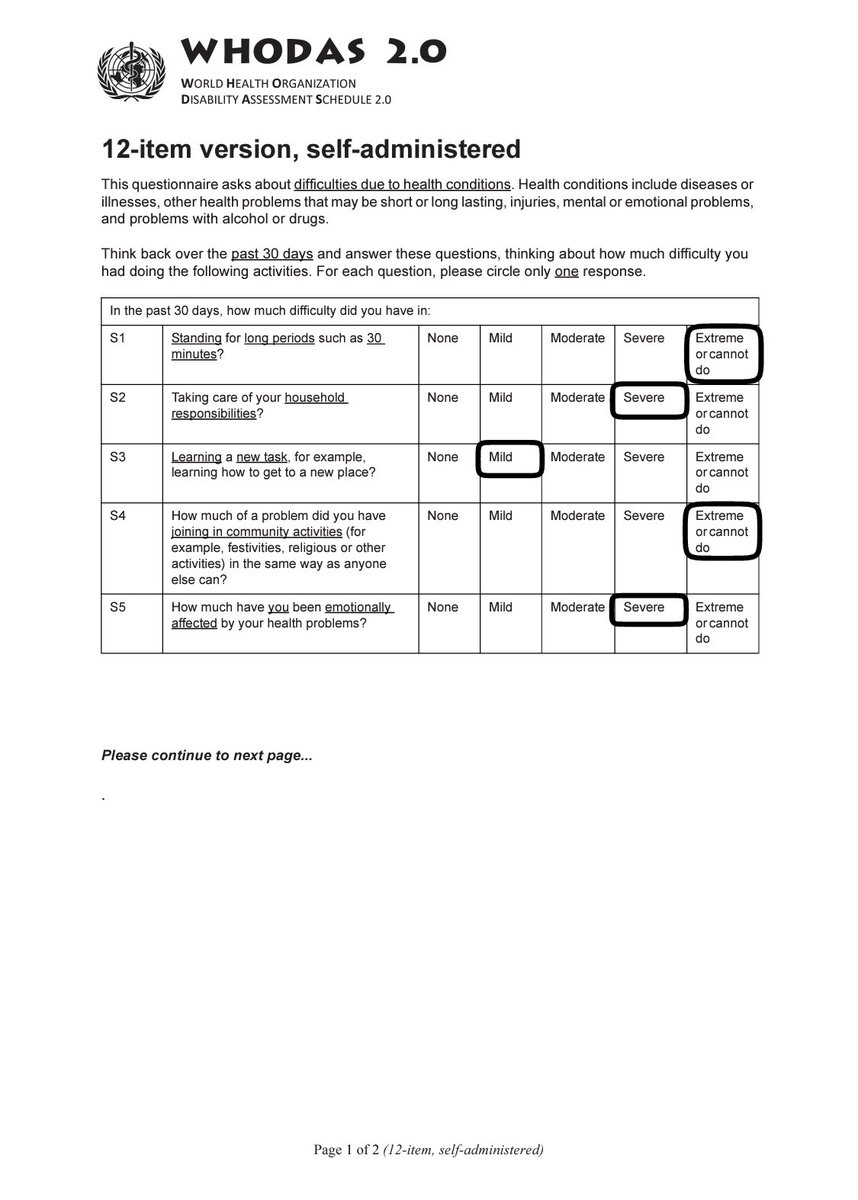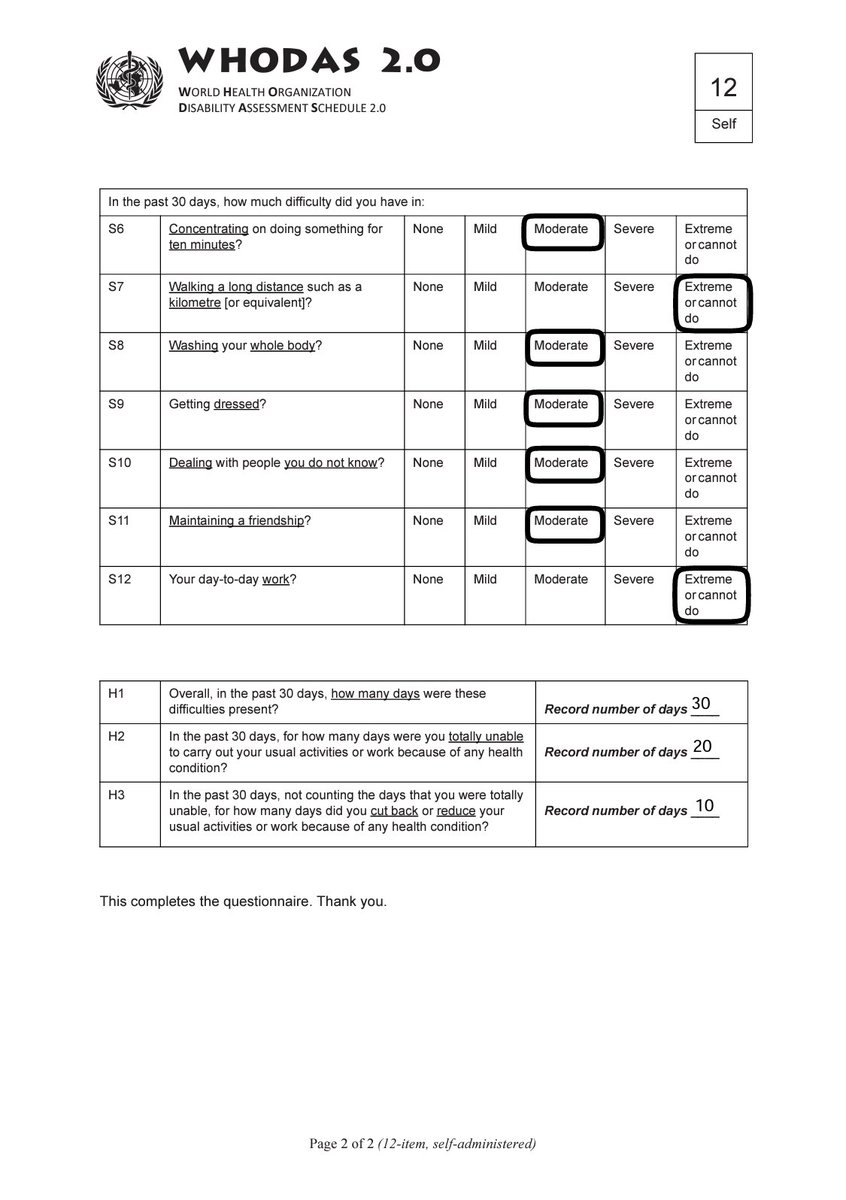
Measuring NEW #disability in ppl living w #LongCOVID 🧵
👉 Symptoms & Quality of life assessed by patient reported outcome measures #PROMs
👉 among 325 ppl in UK who survived hospital admission w #COVID19
👉 at least 3 month follow-up after discharge
assets.publishing.service.gov.uk/government/upl…
👉 Symptoms & Quality of life assessed by patient reported outcome measures #PROMs
👉 among 325 ppl in UK who survived hospital admission w #COVID19
👉 at least 3 month follow-up after discharge
assets.publishing.service.gov.uk/government/upl…
1️⃣ Primary outcome = self reported recovery at least 3 months after initial COVID-19 symptoms
2️⃣ Secondary outcomes =
👉persistent symptoms
👉breathlessness (MRC dyspnoea scale)
👉new disability (Washington Group Short Set)
👉Quality of life (EQ-5D-5L)
2️⃣ Secondary outcomes =
👉persistent symptoms
👉breathlessness (MRC dyspnoea scale)
👉new disability (Washington Group Short Set)
👉Quality of life (EQ-5D-5L)
905 potential participants were approached, with a total of 325 (36%) consenting, replying, with symptoms >3months, and completed questionnaires
Median follow up time after onset of symptoms was 7 months (therefore meeting time criteria of >12 weeks to identify Long COVID)
Median follow up time after onset of symptoms was 7 months (therefore meeting time criteria of >12 weeks to identify Long COVID)
54% (177/325) of people with #LongCOVID reported they did not feel fully recovered.
For my data friends:
👉Confidence interval (CI): 49-60%
👉 Men: 54%, 103/192
👉 Women: 57%, 74/133
For my data friends:
👉Confidence interval (CI): 49-60%
👉 Men: 54%, 103/192
👉 Women: 57%, 74/133
Ongoing symptoms were reported by 93% (303/325, CI: 90-96%) of participants.
👉Fatigue was the most common symptom (77%)
👉 followed by shortness of
breath (54%)
👉Fatigue was the most common symptom (77%)
👉 followed by shortness of
breath (54%)

👉49% reported a fatigue level of 5 (out of 10) or higher
👉56% reported an increase in MRC breathlessness grade of at least 1
👉New MRC breathlessness grade of 3 or higher was reported in 26%

👉56% reported an increase in MRC breathlessness grade of at least 1
👉New MRC breathlessness grade of 3 or higher was reported in 26%


Fatigue and breathlessness commonly occurred together, along with other neurological and pain symptoms
🚨 New disability was reported in 24% (77/318, CI: 19-29%) of participants. There was a significant deterioration in sight, walking, memory, self-care and communication, but not in hearing 

Overall, participants reported a drop in quality of life of around a tenth (0.1 out of 1.0).
👉Usual activities, anxiety and depression and pain were the domains most affected.
👉Usual activities, anxiety and depression and pain were the domains most affected.

In total, 35% reported new difficulties that were described as at least moderate, with pain and discomfort the most common (21%) followed by
anxiety and depression (18%)
anxiety and depression (18%)
Outcomes were worse in females versus males.
👉Younger females (<50) were 5x more likely to report both incomplete recovery and greater disability
👉Twice as likely to report worse fatigue
👉Six times more likely to become more breathless
👉Younger females (<50) were 5x more likely to report both incomplete recovery and greater disability
👉Twice as likely to report worse fatigue
👉Six times more likely to become more breathless
Recovery was worse in ppl requiring invasive ventilation compared to those who had not required any supplemental oxygen.
Persistent symptoms were not related to ⬆️age or comorbidities.
👉younger participants were more likely to report persistent symptoms & ongoing difficulties
Persistent symptoms were not related to ⬆️age or comorbidities.
👉younger participants were more likely to report persistent symptoms & ongoing difficulties
• • •
Missing some Tweet in this thread? You can try to
force a refresh











